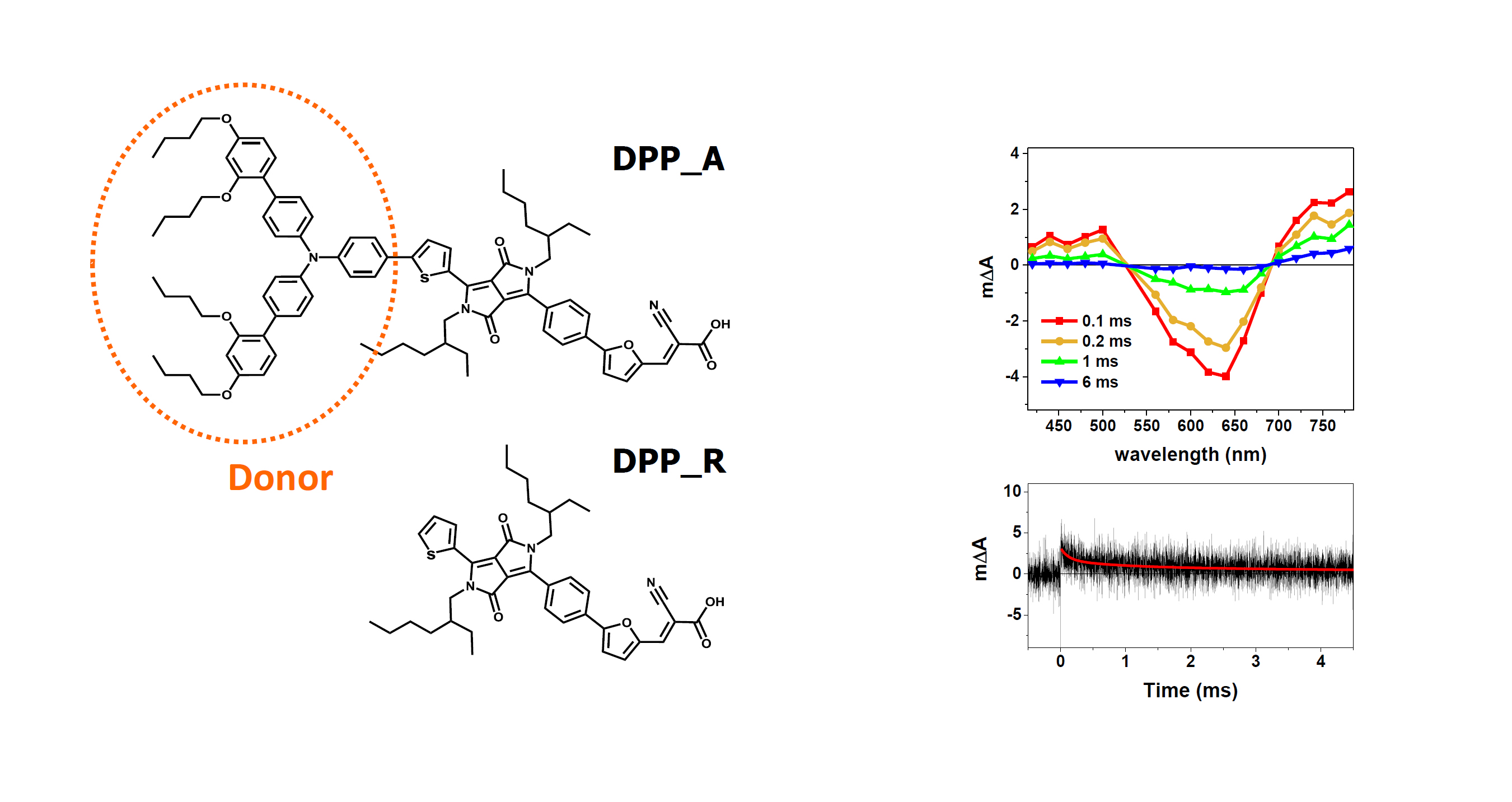Donor Effect on Photo-induced Electron Injection Process in D-π-A Type Diketopyrrolopyrole Dyes on TiO2 Surface
Blue colored diketopyrrolopyrrole (DPP) based dye, where the DPP core acts as a π-bridge in Donor-π-Acceptor (D-π-A) architecture, is an attractive redox sensitizer for dye-sensitized solar cells (DSSCs) based on mesoporous TiO2 anodes, as it encompasses high-performance and aesthetic properties.1 Despite its successful use in practical devices, much has still to be understood regarding the detailed mechanisms and dynamics, by which charge separate upon photoexcitation, within the molecule and across the dye-semiconductor junction. In particular, the effect of donor moiety, which is designed to enhance the dipolar characteristic of sensitizer, still need to be explored regarding to photodynamic processes. Detailed investigation in this field involve the use of steady-state and time-resolved ultrafast transient absorption measurements.
The role of donor in electron injection and recombination processes of electronic excited states of the (D-p-A)-structured dye adsorbed on a redox-active metal-oxide surface, such as TiO2, were scrutinized by femtosecond pump-probe laser spectroscopy. Since kinetic competition between various electron transfer, charge transport, and recombination processes controls the photon-to-electron conversion efficiency in DSSCs,2 these observations are expected to help determine the crucial factors that still limit the photovoltaic performances of organic dye-based solar cell systems and foster new, improved designs.3

[1] Holcombe, T. W.; Yum, J. H.; Kim, Y.; Rakstys, K.; Gräztel, M. J. Mater. Chem. A, 2013, 1, 13978-13983.
[2] Moser, J.-E. in ‘Dye-sensitized solar cells’, K. Kalyanasundaram, Ed.; EPFL Press, Lausanne, 2010; Chapter 11 , pp. 403-456.
[3] Hardin, B. E.; Snaith, H. J.; McGehee, M. D. Nature Photon. 2012, 6, 162–169.